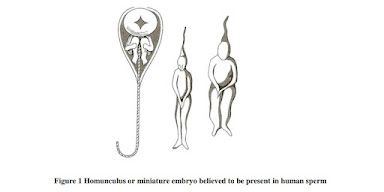Pre-Mendelian Experiments .
A number of viewpoints were put forward prior to Mendel to explain the transmission of character from parents to offspring. They are often called theories of blending inheritance as they believed that parents blended or got mixed during their transmission to the offspring.
1. Moist Vapour Theory
Pythagoras (580-500 B.C.) believed that each organ of the body male produced moist vapours during coitus which formed the body parts of the embryo.
2. Reproductive Blood Theory
Aristotle (384-322) thought that the males produce highly purified reproductive blood containing the nutrients from all body parts. Females also produce reproductive blood but this is impure. The two reproductive bloods coagulate in the body of the female and form the embryo.Due to purity of reproductive blood, the contribution of characters by the male is more than the female.
3. Preformation Theory
The theory of preformation believes that the organism is already present, i.e., preformed in the sperm or egg in a miniature form called homunculus. Fertilization is required to stimulate its growth. Sperms were observed for the first time by Leeuwenhoek, in 1672. Preformation theory was given by Swammerdam (1679) and advocated by Malpighi (1673).
4. Theory of Pangenesis
This theory, proposed by the famous English naturalist Charles Darwin (1809-1882), states that very small, exact but invisible copies of each body organ and component (called gemmules) are transported by the blood stream to the sex organs. These gemmules are assembled in the gametes. After fertilization these gemmules move out to different parts of the body resulting in the development of respective organ.
A defective gemmule will lead to the development of defective organ in an individual.
